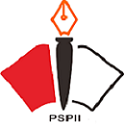BUILDING RELIGIOUS CHARACTERS OF THE 21ST CENTURY MUSLIM GENERATION
Abstract
This research is motivated by the students’ low thinking ability shown by the results of the aqeedah understanding test with an average value of 57.1. The test was conducted on 212 randomly selected Muslim students of UNIKOM. The purpose of this research is to strengthen the way of thinking in improving faith (aqeedah) to build the religious characters of the 21st century Muslim students. Building the characters was done by developing aqeedah learning model aqeedah in PAI course using Talaqqiyan Fikriyyan Method based on rational thinking. This Research and Development (R&D) research used the ADDIE model. The stages were preliminary studies, model development, and model testing. Data were collected using observation, interview, literature study, questionnaire, and test. The results showed that students’ level of thinking ability increased. The average value of the posttests of the experimental class was 73.75 and the control class was 60.18. These results indicated that the use of the model made significant difference.
Keywords
Full Text:
PDFReferences
Abdullah. (2002). Mafahim Islamiyah, Menajamkan Pemahaman Islam. Al-Izzah. Bangil.
Al-Uthaymeen. (2002). Soal Jawab Masalah Iman dan Tauhid. Solo: At-Tibyan.
An-Nabhani, T. (2003). Al-Syakhshiyyah Al-Islâmiyyah I. Beirut: Dar al-Ummah.
An-Nabhani, T. (2004). Nidhom Iqtishody. Lebanon: Dar al-Ummah.
Baits, A. N. (2015). Berfikir Sesaat Lebih Baik dari Beribadah 60 Tahun?Berfikir Sesaat Lebih Baik dari Beribadah 60 Tahun? Retrieved from https://konsultasisyariah.com/26102-berfikir-sesaat-lebih-baik-dari-beribadah-60-tahun.html
Creswell, J. W. (2017). Research Design Pendekatan Metode Kualitatif, Kuantitatif, dan Campuran (2nd ed.). Yogyakarta: Pustaka Pelajar.
Hafiyatillah, L. (2008). Studi Implementasi Pembelajaran Talaqqi di Sekolah Tahfizh Plus MI Khoiru Ummah Kota Bogor: Studi Kasus pada Sekolah Tahfizh Plus MI Khoiru Ummah Kota Bogor. Universitas Pendidikan Indonesia, Bandung.
Hizbu-at-Tahrir. (2004). Foundations of The Education Curriculum in The Khilafah State. Beirut: Dar al-Ummah.
Nurhayati. (2016). Metode Pembelajaran Talaqqiyah Fikriyah dalam Mata Pelajaran Saqafah Santri Putri Tingkat Wusta (SMP) Pesantren Panatagama Yogyakarta. Program Pascasarjana UIN Sunan Kalijaga, Yogyakarta.
Rahim, S. I., Yakob, M. A., & Rahman, F. A. (2016). Talaqqi Method in Teaching and Learning for the Preservation of Islamic Knowledge: Developing the Basic Criteria. Contemporary Issues and Development in the Global Halal Industry, 313–320.
S. Mahardika. (2014). Konsep Talqiyan Fikriyan Dan Implementasinya Pada Pendidikan Islam Di HSQ Khoiru Ummah Islamic Boarding School Bogor. Program Pascasarjana UIN Sunan Kalijaga, Yogyakarta.
Sauri, Nursyamsiah, & Yayan. (2018). A critique of local wisdom values in Indonesia’s pesantren. Pertanika Journal of Social Sciences and Humanities, 37–55.
Sauri, S. (2016). Pendidikan Karakter dalam Perspektif Islam. Bandung: Rizqi Press.
Syihabuddin. (2011). Pendidikan dan Bahasa dalam Perspektif Islam. Bandung: Rizqi Press.
Yasin, A. (2012). Strategi Pendidikan Negara Khilafah. Bogor: Thariqul Izzah Library.
Yusuf. (2008). Psikologi Belajar Agama. Bandung: Maestro.
DOI: http://dx.doi.org/10.24042/atjpi.v11i2.7284
Refbacks
- There are currently no refbacks.
Copyright (c) 2020 Al-Tadzkiyyah: Jurnal Pendidikan Islam

This work is licensed under a Creative Commons Attribution 4.0 International License.

Al-Tadzkiyyah: Jurnal Pendidikan Islam is licensed under a Creative Commons Attribution 4.0 International License. Copyright © UIN Raden Intan Lampung. All rights reserved.








